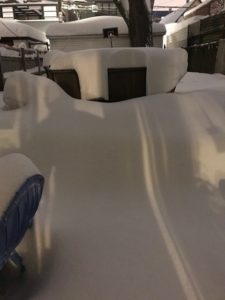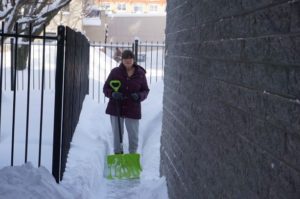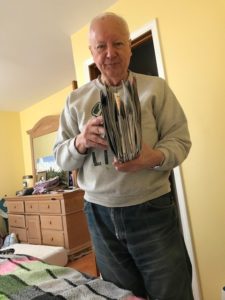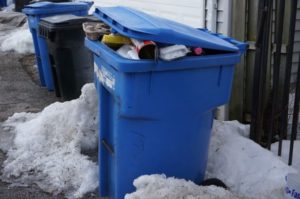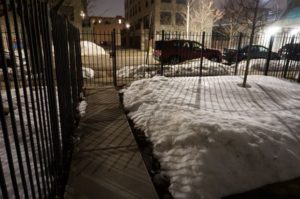I am not a doubter when it comes to the COVID-19 vaccines. All I want to do is sign up and let them put a sharp needle in my arm and inoculate me. Do it twice if the vaccine demands it. Even my experience in early February with the shingles vaccine cannot deter me. On a Tuesday afternoon, a pharmacist at the local Walgreen’s provided a shot that I requested at my doctor’s suggestion. It has been two decades since I experienced my second episode of shingles, but I vividly recollected the piercing pains in my shoulders and arms that made it nearly impossible to exercise my fingers on a keyboard, one of the most basic things I have long done to earn a living. I told the pharmacist that I “noticed it but did not feel it.” He put a bandage over the location on my upper left arm, and I left, thanking him.
It was that evening that I noticed my reaction as muscle aches spread from that left arm across my upper chest. Then the chills set in, and I pulled the covers over me in bed. I repeatedly felt my forehead, testing for a fever. Nothing happening. The next day, the muscle aches diminished, but the chills persisted, and I sat in a leather chair with a blanket pulled over me, doing little but reading a newspaper and then falling asleep. I had slept all night, but it mattered not; the fatigue overpowered me. Late that afternoon, I struggled through two online meetings, and my energy again failed me. I spent the next day feeling slightly more energetic until about 3 p.m., when I fell into a deep sleep, again with blankets covering me as I accomplished nothing. My wife says I turned white, but I wouldn’t know. I lacked the energy to look into the mirror.
By Friday, I at least posed a question to my primary physician on the patient portal: Is this normal? He wrote back to say that about 20 to 25 percent of people getting the shingles virus experience such a reaction, which mostly proved that the vaccine was beneficial. My immune system was relearning how to fight the shingles virus. That was vaguely reassuring, and I knew he knew whereof he spoke, but it took one last development to convince me.
Late that Friday afternoon, with the better part of a week lost to malaise, I suddenly felt the fog lift and the fever break, though it was not really a fever. All within an hour. It just stopped. My immune system had learned what it needed to know, and it ceased fighting what was not there. And I was fine. That’s part of how vaccines work, but I could not recall ever experiencing such a reaction to any previous vaccine.
Amid this experience, however, the snow piled up in Chicago. First came a snowstorm that covered our yards and streets in blinding whiteness. Often, in Chicago winters, these snows come, sit around for a few days until the sun comes out, and they melt away as the temperatures rise.
But not this time. Until February in this season, we had seen little more than timid flurries of pixie dust that barely covered the ground, with green shoots of grass still poking out from below. Now it came to stay, as temperatures soon plunged to zero and slightly below, solidifying the growing accumulation of snow even as we struggled daily to clear a path down our gangway and along the sidewalk in front of our home. I shoveled in front of a neighbor’s home as well, knowing he had recently had hernia surgery. And the very next day, we had to do it again.
The three weeks of persistent snow culminated in a 17-inch overnight debauchery on Presidents Day that left us staggering and feeling quarantined by virtue of a simple inability to move a car down the alley, or the challenge of climbing over hip-high snow piles at intersections. During those three weeks, our cumulative snowfall mounted to 40 inches.
Our somewhat metaphorical confinement by way of extensive pandemic restrictions now took on major physical dimensions, leaving us feeling imprisoned. Not only was there nowhere to go because the restaurants were closed, but there was no way to get out, either. In place of my brief fatigue in reaction to a shingles virus, I now felt a very real spiritual and emotional fatigue at the mere thought of needing boots and a heavy coat just to step outside. Staying at home felt more like incarceration than refuge. Even the mail, which provides some tangible connection to the outside world, was no longer arriving. The carrier on our route, and probably on many others, was not braving the snow piles and frigid weather, and the mail piled up at the post office until, one day, I simply walked the mile to get it, standing in line for more than half an hour for a pile of paper surrounded by a rubber band, partly containing bills to pay. The process took long enough that, by the time it was over, I needed to use a bathroom and home was too far away. I opted for the nearby Cozy Corner diner, and showed my gratitude by staying for lunch. It’s a very decent eatery, actually, and I enjoyed my California melt with fries. And then I walked home again, through the very snow piles that had impeded its delivery. Watch where you walk when you cross the street.
By the following Sunday, temperatures rose and stayed above freezing. The snow began to melt, removing the impediments to delivery. Nonetheless, in the past week, delivery occurred only on Tuesday, when the mailbox was suddenly full, but it was an aberration rather than real change. No mail arrived for the rest of the week. This has been an ongoing problem across Chicago, for systemic rather than purely weather-driven reasons, and even more so in some South Side ZIP codes than ours, which is itself bad enough. The Chicago Tribune ran an article about the Trumpian mess in which U.S. Rep. Bobby Rush expressed his impatience on behalf of his constituents about the staffing excuses, saying there were plenty of unemployed people in the city, so “if you have a job, do it.”
That comment formed an interesting backdrop to the other event the same day all mail arrived. The city recycling pickup occurs on our block on alternate Tuesdays, and our bins were full, if somewhat piled around with snow. The trucks seemed to be very selective, leaving our stuff uncollected, so that we are now storing recyclables in paper bags in the garage. I complained to the city Streets and Sanitation Department in an online forum that left little room for comment, then forwarded the complaint and further explanation to our 1st Ward alderman, Daniel La Spata. I noted that the previous week, the regular garbage pickup occurred without a problem under worse circumstances. He informed me that a private company had been hired for the recycling, similar problems had emerged elsewhere, and added, “Honestly, that’s the difference between public employees and privatized ones, and why we’re pushing back on the latter.” Some might question that comparison in light of the post office problems, but I would suggest that the U.S. Postal Service, to a significant degree, has been the target of efforts to undermine it as a means of justifying privatization and subverting the integrity of mail ballots. In any case, I still want them to empty those blue recycling bins.
During all this, I nonetheless wanted to access the COVID vaccine so that I could move beyond the sense of limitation that nearly a year of closed stores and restaurants, and mask wearing and social distancing, has instilled in all of us. For compulsive extroverts like me, the compounded effect of long-term pandemic restrictions followed by a month of being buried in frozen precipitation is producing a profound restlessness. Put simply, I want out.
I have not yet mentioned that five grandchildren have been studying remotely in our home since September. We are guardians for one, and the others are here as their mother engineers a major change in her life, and besides, my wife is a retired public schools teacher who can mentor them. Throughout February, the Chicago Teachers Union engaged in a vociferous public debate with the Chicago Public Schools and Mayor Lori Lightfoot about reopening schools, arguing over the adequacy of the preparations for protecting teachers and staff from coronavirus exposure. This took place against the backdrop of the larger national debate over online versus in-person education, but I know what I see. The kids are noticeably glazing over and tuning out, and listening to a teacher on a screen is getting old. Students, particularly students of color (most of our grandchildren) and those with working parents, are falling behind, and the schools will have a major challenge in coming years of reversing the impacts of online education. Students in the early grades need human contact to remain fully engaged. None of this is to deny the necessity that drove the schools to close, but the national failure to manage the pandemic has greatly exacerbated the consequences.
We need to get our national act together, and moving millions of doses of vaccines to sites where people can get some sense of relief is the most important step right now. Instead, I’ve found myself checking online daily, sometimes multiple times daily, only to find no availability for vaccine appointments. But my wife finally got her call for March 2, so I remain hopeful. I have no other choice.
That expression of patience is at the heart of our dilemma. I could live with the snow, however impatiently and with some humor, because I knew that warmer days lay ahead, and snow cannot outlast St. Patrick’s Day in Chicago. Unlike Texas, our infrastructure is designed to handle winter. A slow, steady rise in temperature would allow snow to turn to water at a steady pace without triggering floods. We will be fine.
What has been less certain has been the ability of our national public health infrastructure, as disheveled as political neglect has allowed it to become, to respond to the pandemic. But I can also feel a steady warming trend since January 20, however halting it has seemed at times. The big snowstorm, which jostled its way through Kentucky and Tennessee and Arkansas all the way down to Texas and Louisiana, slowed distribution of vaccines, but maybe for a week. My wife learned that she got her appointment because PrimeCare, a local health care provider, had just received a big shipment.
My turn will come, and so will yours if you’re smart enough to get vaccinated. My outlook will change with the warm breezes of spring, and I will start to think about where I can go and what I can do. We will end this year-long cabin fever that has been induced by a tiny virus with protein spikes that latch onto receptor target cells in a microbiological process most of us do not understand.
But it may be a long time before we stop talking about it. Our collective COVID cabin fever does that. Let’s all talk about what we as a nation can do better next time. Do it over beer or coffee or tea, but make it a productive, meaningful conversation. I’m tired of gripes. I prefer solutions.
Jim Schwab

